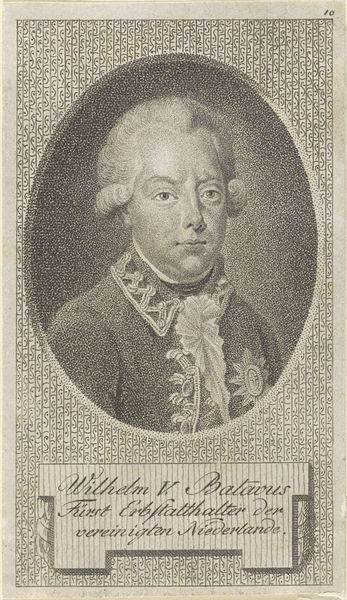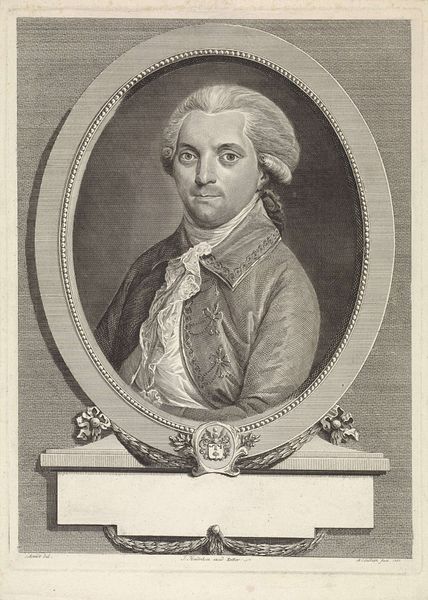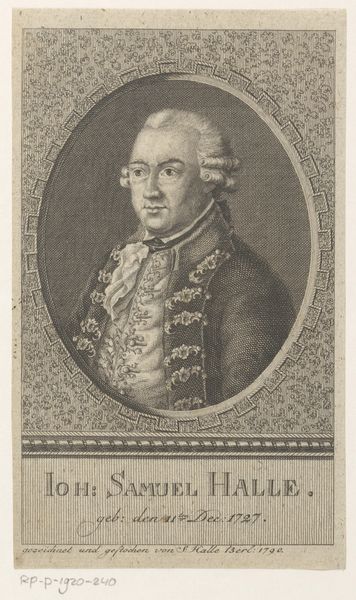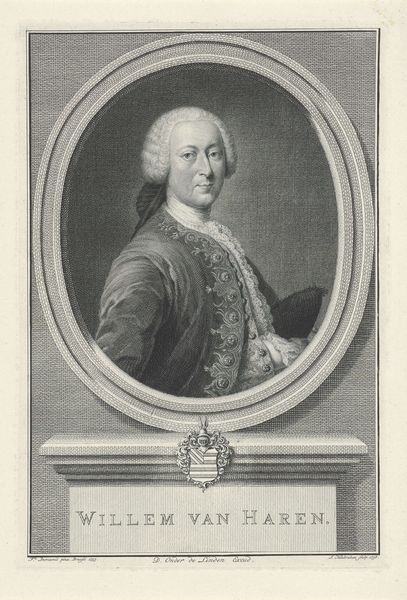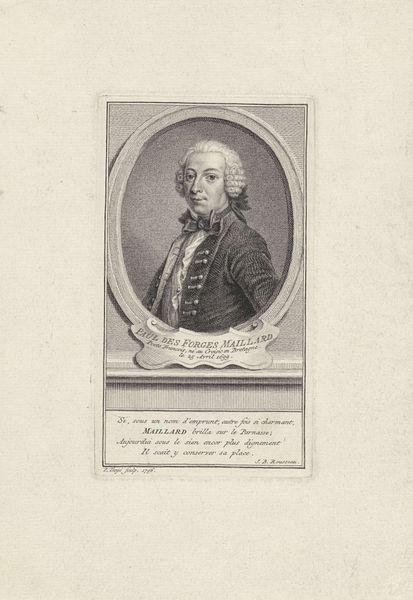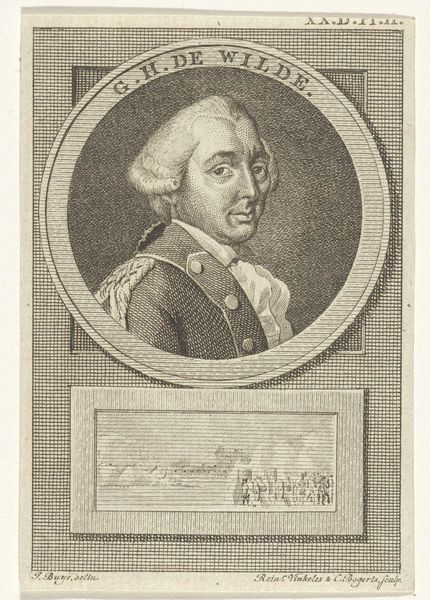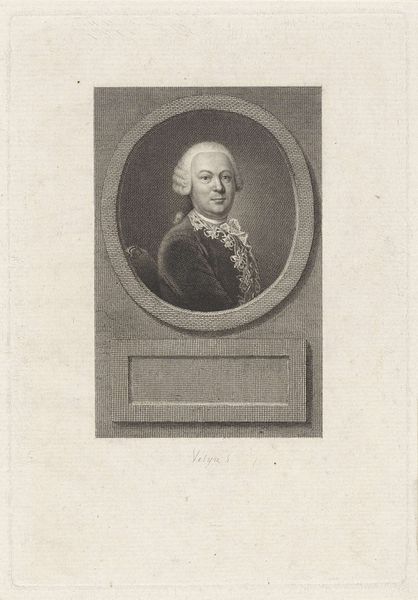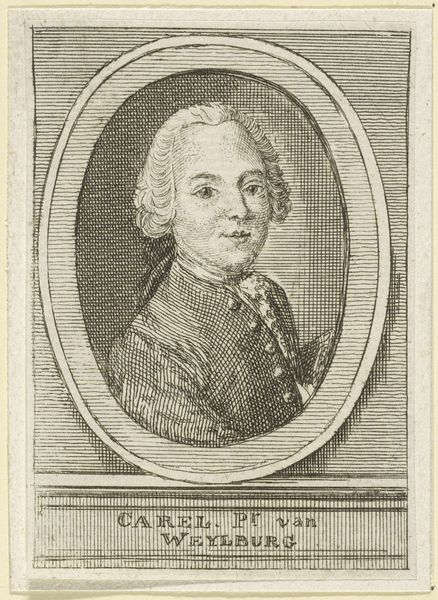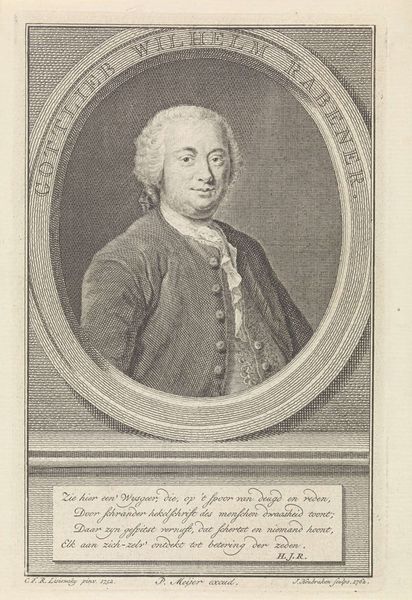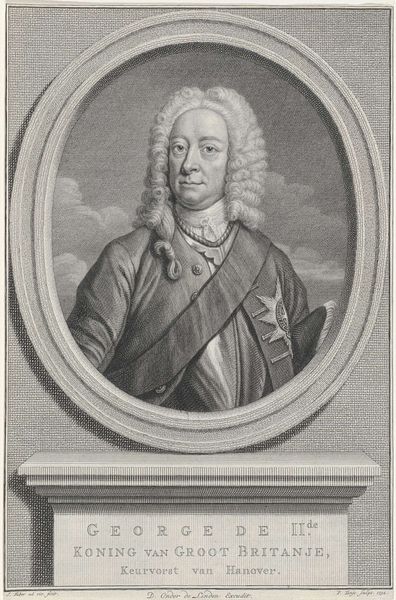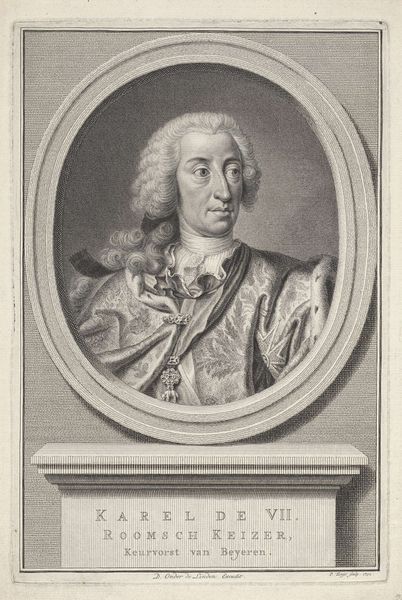
#
historical design
#
aged paper
#
wedding photograph
#
photo restoration
#
old engraving style
#
unrealistic statue
#
old-timey
#
19th century
#
historical font
#
columned text
Dimensions: height 178 mm, width 116 mm
Copyright: Rijks Museum: Open Domain
Curator: Immediately, I notice the somber yet commanding presence this engraving holds, despite portraying Willem V as quite young. There’s a weightiness in the etched lines, wouldn’t you agree? Editor: Indeed. This is Reinier Vinkeles' 1767 print, "Portret van Willem V, prins van Oranje-Nassau," residing here at the Rijksmuseum. It presents Willem V within an oval frame atop a dedicatory inscription. As a work, it functions to solidify his image, his place within a very visible lineage. Curator: That carefully constructed public image strikes me. I wonder how much it shaped his identity. He's adorned in finery, yes, but the gaze feels almost…distant. Is it performance, or is it him? Did these constant representations become him? How do those societal pressures intersect with what we might term his ‘authentic’ self? Editor: A fascinating point. Considering the period, artistic license certainly plays a role, but there’s an element of statecraft present as well. Consider the broader history—the stadtholderate was undergoing profound scrutiny and this portrait had to be reassuring. The House of Orange needed continued legitimacy. Curator: So this is also a form of propaganda then, carefully designed to position him as an assured and legitimate heir during uncertain times. His costume is a clear signifier but the stern facial expression works so hard here. Editor: Absolutely, and engraving played a crucial role in distributing that propaganda, allowing it to permeate society. Its ubiquity reinforces the established power structures, influencing perception on a large scale. The original image, translated by an engraver to make multiples—it's designed to impact. Curator: But can it though, with all this history working *on* him? Today we read this portrait in the contexts of inherited wealth and status and so we must also recognise its function of *exclusion*. In many ways, nothing much has changed. Editor: Ultimately, this artwork serves as a portal to understand Dutch society and the complexities of leadership in the 18th century, its legacy woven into the very fabric of Dutch national identity. Curator: A reminder that even seemingly straightforward portraits can open up profound dialogues about identity, power, and the lasting impact of representation.
Comments
No comments
Be the first to comment and join the conversation on the ultimate creative platform.
